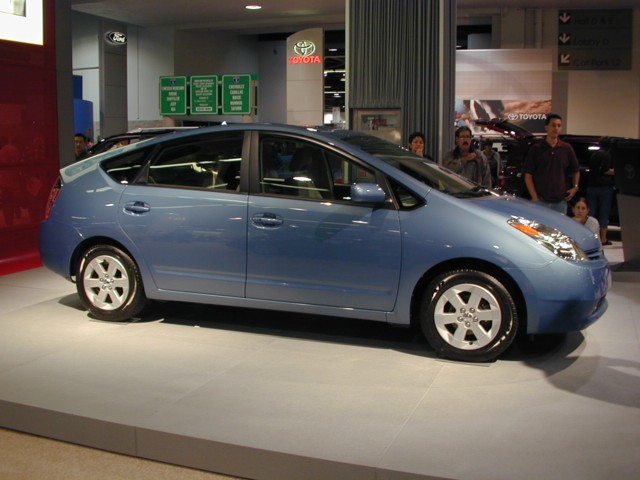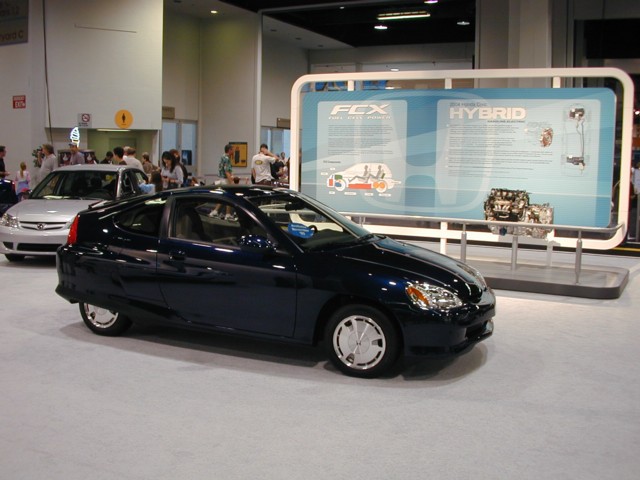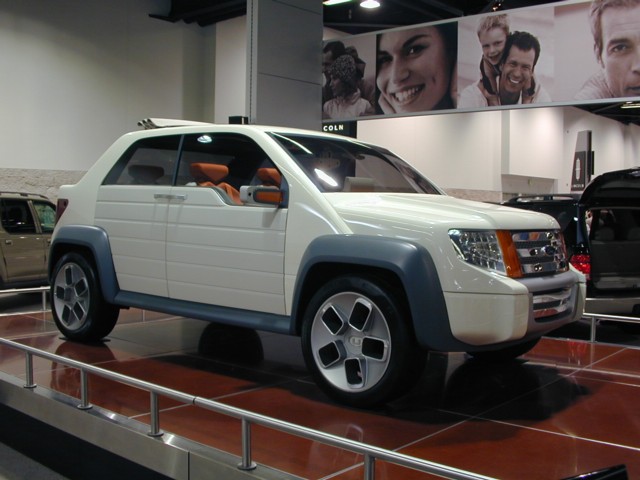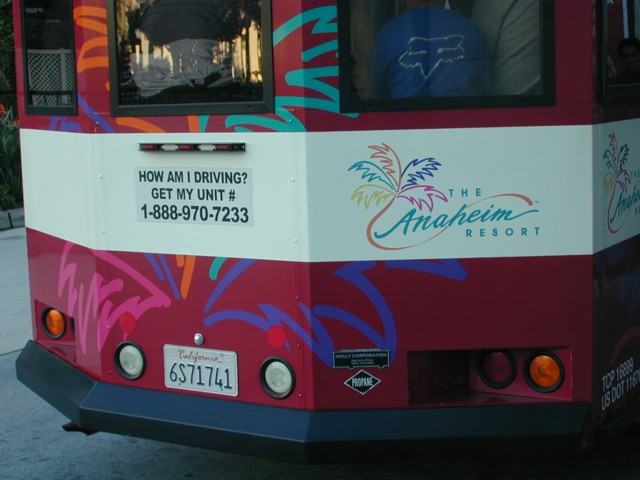
Home - AFV Events - Auto Shows - 2004 Anaheim Auto Show
Well, in addition to being "Uncle Mark," I'm a daddy now! One day after I posted a webpage saying farewell to the EV1, we said hello to our daughter. I guess I now have even more reason to want cleaner air for future generations, since my wife and I are now responsible for one member of those future generations. (I don't think I'll change the name of the website, though; after five years, I kind of have a "brand" going...) Of course, a baby constrains one's extracurricular activities a bit, but thanks to my very tolerant wife I was able to slip away to the California International Auto Show in Anaheim on 1 November 2003.

Over the last few years, I've been seeing fewer and fewer alternative-fueled vehicles at the Anaheim Auto Show. Of course, as some kinds of alternative powertrains get more and more "mainstream," they become less and less remarkable; you seldom see any special attention, for example, paid to models that can burn ethanol. Hybrid-electric vehicles, at least from Honda and Toyota, have definitely entered the mainstream; however, there was some extra attention given to the 2004 Toyota Prius, shown here. After the runaway success of the previous version during its first few years in the U.S. market, Toyota has created an even more desirable vehicle: it is larger and more powerful than the previous version, and has a liftgate for easier cargo access, but it also gets better fuel economy and has cleaner tailpipe emissions, and the price is the same! The warranty on the hybrid-specific components, including the battery pack, has been extended to 8 years or 100,000 miles; that's better than they ever offered with their RAV4-EV battery-electric SUV, which only got the standard 5 year or 50,000 mile powertrain warranty.

I had thought that Honda was going to stop making their two-seat Insight hybrid now that they have introduced a much more popular hybrid version of the Civic sedan, but here's a 2004 model. Behind it is a Civic GX powered by compressed natural gas (CNG), and a display discussing the Civic hybrid (with the engine on a stand in front) and the FCX fuel-cell vehicle. There was a Civic hybrid on display here too, but no FCX.
This sign was posted in the Honda area to underline that they have the bragging rights for the most fuel-efficient lineup of vehicles (not to mention the Civic GX, which doesn't use any petroleum fuel at all); however, it inadvertently also makes another point: note the Toyota Prius in second place! This five-seat mid-size car (it is larger than the previous version's compact classification) with automatic transmission is second only to a two-seater Insight with manual transmission. That's quite an achievement on the part of Toyota, and indeed, one kind of suspects that Honda keeps the Insight in production at least in part so that they don't have to surrender the number one spot...

The only hydrogen or electric vehicle I saw at this show was the Ford Model U shown here; even the Global Electric Motorcars folks were absent. The Model U was off in a corner of the Ford area without any signage, or people around to talk about it; I only figured out what it was by borrowing the one photocopied page that was behind the counter at the Ford information kiosk. The Model U had a badge saying "H2EV" on the rear; this is a hybrid electric vehicle (HEV) whose internal combustion engine (ICE) burns hydrogen (H2). With a 2.3-liter engine, it gets fuel economy of about 45 miles per gasoline-gallon-equivalent (GGE) of hydrogen; boosting fuel economy of a hydrogen ICE is critical to increasing range between refuelings because it takes a lot of space to store a GGE of hydrogen. Another interesting thing about the Model U is that the electric motor/generator in its hybrid drivetrain replaces the torque convertor in an otherwise relatively conventional drivetrain with ICE and automatic transmission; this kind of modular design makes it easier to incorporate hybrid componentry in various existing vehicles, including gasoline-powered ones.

As I noted at top, I've come to expect to be disappointed by the alternative-fueled vehicle turnout at the Anaheim Auto Show the last few years, and, well, I wasn't disappointed this time. I didn't see a single propane or natural gas vehicle (NGV) inside except the Honda Civic GX (though the Honda folks did have some interesting brochures about Phill, the new home natural-gas refueling appliance that Fuelmaker hopes will boost consumer interest in NGVs). I was also unable to identify any ethanol-capable vehicles, though as I noted above these are pretty mainstream and I may simply have missed them because they had no special badging. On the other hand, that close to Disneyland I saw any number of CNG shuttle vans out on the streets, and the bus that took me back and forth from the remote parking area was powered by propane. So, in fleet and transit applications anyway, propane and CNG are the mainstream, and I guess I can't complain about that!
 Back
to AFV Events Page
Back
to AFV Events Page Back
to Fueling Station
Back
to Fueling Station Site
Map
Site
Map Contact
Me
Contact
Me All content copyright 1998-2024 by Mark Looper, except as noted. Reuse of my copyrighted material is authorized under Creative Commons Attribution 4.0 International license (CC BY 4.0).
![]()
![]()
new 12 November 2003